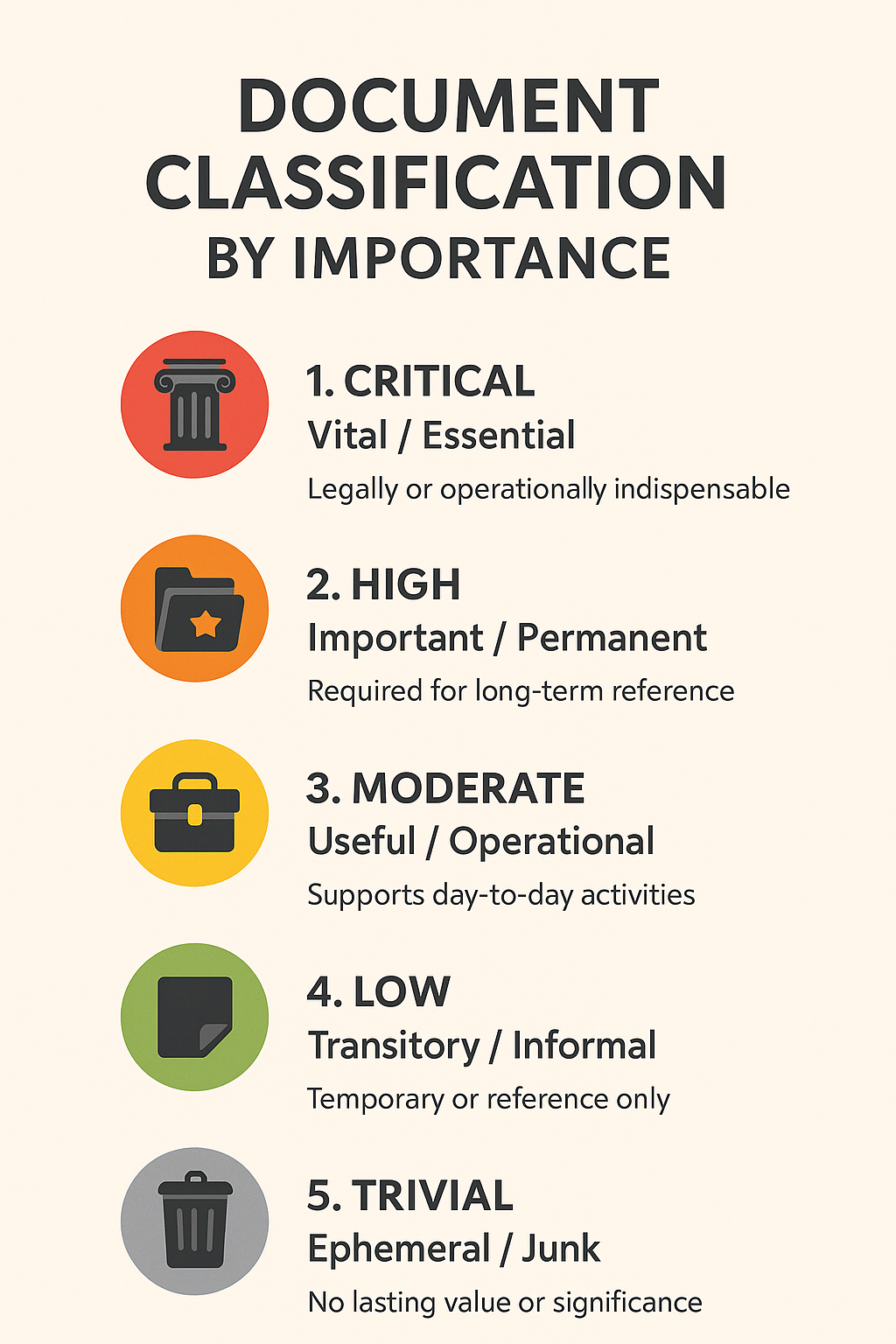How to Classify Different Types of File Attachments in Jira
Due to the flexibility of Jira, it can support many different usage scenarios.
Hence it has many different types of file attachments of differing importance.
Importance Level
Most organizations will categorize their documents with an importance level which is based on a few factors:
Legal Requirement: If a document is legally required (e.g. compliance, tax, corporate governance), it’s usually Critical or High.
Operational Impact: If its absence would disrupt operations, consider it High.
Time Sensitivity: Short-lived value often indicates Moderate or Low.
Reproducibility: If it can be easily recreated or has no enduring relevance, it’s likely Low.
These are general guidelines — you should adapt them based on your industry regulations, jurisdiction, and internal policies.
Importance Level | Classification | Description | Suggested Retention Period |
|---|---|---|---|
Critical 🔐 | Vital / Essential | Legally or operationally indispensable. Required for continuity and governance. | Permanent or as required by law |
High 📁 | Important / Permanent | Required for long-term reference, auditing, or proof. Loss causes serious issues. | 7–10 years or more |
Moderate 🧰 | Useful / Operational | Needed for routine business but not mission-critical. Often time-bound. | 2–5 years |
Low 💬 | Transitionary / Informal | Temporary reference or casual communication. Can be discarded after use. | Up to 1 year |
Trivial 🗑️ | Ephemeral / Junk | No lasting value. Often clutter. Safe to delete immediately. | Immediately or < 30 days |
Different types of Files of varying importance
We compiled this list from the Jira instance we used for over 17 years.
You can use this as a guide to decide what type of files to housekeep.
Document Types | Common Extensions | Critical | High | Moderate | Low | Trivial |
|---|---|---|---|---|---|---|
Documents | docx, xlsx, pptx, pdf, rtf, msg |
|
|
|
| |
Images | png, jpg, gif |
|
|
|
| |
Text | txt, log, csv, html, xml, json, svg, crt, pem, asc |
|
| |||
Videos | qt, mov, mp4, mpg |
|
| |||
Zips | zip, gz, rar, 7z |
| ||||
Binaries | jar, obr, exe, com |
| ||||
Calendering | ics |
| ||||
Code | js, python, java, sh, sql |
|
Conclusion
The retention period is the amount of time an agency keeps and maintain its records and documents for legal, tax, financial, administrative or historical purposes.
Based on the table above, an important issue may contains attachments with different importance.
It is not necessary to retain those attachments with low/trivial attachments.
Infographics

